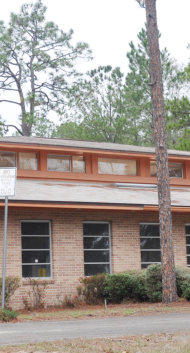History of the Melrose Public Library



r
Nothing defines Melrose better as a community than the example of how the Melrose Public Library,
the first full-service branch library in Putnam County, was created and how it grew. Both the main
building and the new wing became realities because of local initiative. The idea for it started in the
Melrose Women’s Club, where Maud Watkins championed the cause. Out of that came the Melrose
Library Association.
The MLA raised money through community events and solicitations for the main building, which was
completed in 1984, and then later for the wing, essentially completed by late 2000. The state of Florida
provided matching funds. “The effort was Melrose at its community best”, said Kathi Warren, president of
the MLA and shepherd of the campaign to build the new wing. “Almost everyone helped in some way.”
The history of the library tells the story. The Rev. Fred Yerkes, longtime rector of Trinity Episcopal
Church and library enthusiast (now deceased), kept track of how it came to be.
In 1890, Yerkes said, the minutes of the local Lady’s Literature and Debating Society first mentioned the
need for a library. In 1900, an earlier rector at Trinity, the Rev. George Gilmore, moved the idea along.
Gilmore, a former English school master, wrote to the Society for the Propagation of Christian Knowledge
in England about the need for a library here. The society responded by sending two cases of books. Since there was no library building,
Gilmore stored the books at the church. Other people gave books, and the church lent them publicly.
Emma Brinson, daughter of Trinity’s senior warden, took on the library as a project and kept it alive during that period.
Under Yerkes’ guidance, the church’s Boy Scouts in 1939 built a Scout Hut on church grounds as a place, where the troop could hold their
meetings. The hut also became a depository for the lending library. For a short time, in order to qualify for some federal (WPA) library
assistance, the books were moved off the church grounds to the Melrose Homemakers Club, where they stayed for about five years.
When the federal money ran out, the library then moved back to Trinity Church, which by then had acquired a Parish House. The books
went into the loft of the Parish House. Because the stairs to the loft were a problem for some of the library patrons, the books were moved
again, this time back to the Scout Hut. The scouts made room by agreeing to hold their meetings in the Trinity Parish House.
The Melrose Woman’s Club, successor to the Lady’s Literature and Debating Society, in 1956 persuaded Putnam County to pay a small
sum each month for a local librarian. The first librarian was Mrs. Mildred Spires, a member of Trinity Church. Other librarians serving in
the Scout Hut were Jean Allen and Olive Hulett, both also members of Trinity.
In 1979, Maud Watkins, a former principal of Melrose Elementary School, began a campaign for what she called a “proper” library. She
went to the state legislature and with the help of the local delegation obtained a state grant that would match the local funds. That made
the library a reality, and was a historic milestone as the first full-service branch library in Putnam County.
In December of 1983, the Scouts moved 7,000 books out of the Scout Hut at Trinity and on January 22, 1984, the new Melrose Public
Library officially opened. The concrete block, brick veneer building had 3,100 square feet of space and had room for 10,000 books.
Virginia Bird was the first librarian in the new building. She eventually was succeeded by Stella Brown and Sheree Sims.
Within a few years, it became apparent the new library needed still more space if it were comfortably to house both its children and adult
programs. The MLA again took on the task of raising some $75,000 to enable another state grant for construction of a 1,300 square foot
wing. The project again was a community-wide effort. Local architect Dore Rotundo, who had designed the main building, also planned
the wing. The original site was donated by local owner Edna Williams. Property for the addition was purchased from Williams at a nominal
price. A major contribution from retired banker Charles Norton assured success of the funds drive. Stella Brown and other locals gave time
and expertise as needed.

















